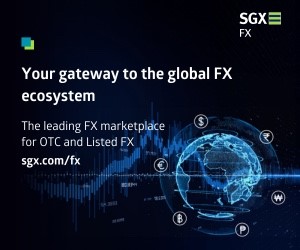The Last Look…
Posted by Colin Lambert. Last updated: June 25, 2024
The Global FX Committee meets next week and one of the topics on the agenda will probably be pre-hedging, specifically how the FX Global Code treats it and whether or not the guidance paper published after the previous review of the Code was completed, should be better incorporated?
I should frame this discussion, as I always like to do, by stressing that the Code has been a real benefit to the FX market and remains fit for purpose – above all else, it makes clear what is – and isn’t – good practice, leaving would-be malfeasants with little or no excuses to fall back on. The Code is not, however, perfect; very little is of course, and one area where the industry is still running too much risk, is pre-hedging.
Earlier this year, Westpac was fined by Australian regulator ASIC for “unconscionable” pre-hedging, but what has also been missed by many is that another case that may involve the practice could also be about to hit the headlines. In May, the Australian Financial Review reported, it was later confirmed by the bank, that ASIC was investigating trading around an AUD 14 billion bond sale of which ANZ was a co-lead manager and managed the price risk. The AFR report highlighted – although neither the bank, nor regulator has confirmed this – pre-hedging activity as a focus of the review.
Both of the aforementioned cases are in fixed income of course, something the Code has no role in, but big transactions are an everyday occurrence in FX, even if we put aside the semantics involved in “pre-Fix hedging” versus “pre-hedging”, and that means the FX industry needs to pay attention. Clearly, any activity involving this practice is fraught with risk for the dealer – in the latest case, the AFR even reported that the Australian Office of Financial Management (AOFM), the client involved, accepts pre-hedging as a practice.
This means that the bank probably has not broken any rules, its public disclosures reveal it occasionally pre-hedges, but that maybe it didn’t do the best job. The worry for me is that the guidelines appear to have been followed here, and there is, reportedly, still an investigation. Over what? The amount of pre-hedging involved? If we go there, exactly how much pre-hedging is acceptable, then a whole other can of worms is being opened.
This should all be food for thought for the GFXC in its coming meeting, and potentially the one after, as it wrestles with the issue. The GFXC survey taking the temperature of the industry on the Code late last year found that pre-hedging, along with last look and settlement practices, were three areas that registered anything more than a small blip on the chart when it came to areas needing further work.
Last look still consumes a lot of oxygen in the FX industry but pre-hedging is the one causing legal headaches
In the survey, the question that asked how effective the pre-hedging guidance paper had been, received a 47% response that said said either “effective” (37.2%) or “very effective” (9.9%) and just 2.1% said it had been “ineffective” (the balance was “neutral” or, worryingly, “not aware of the amendments”). As I have pointed out before, it would be helpful to know the segment of the market from which the “ineffective” responses came, that could help frame the discussion further.
The survey also asked if the guidance should be incorporated into the Code and just over 71% said “no”. That is a healthy majority, but again, it would be helpful to know who made up the almost 29% that said “yes”. In its latest minutes, the GFXC observes that feedback from those who thought the pre-hedging (and last look) papers should be incorporated in the Code, highlighted how it would help to have a single source of best practice and a clear market consensus regarding the relevant Principle.
In the minutes of the last GFXC meeting, it is stated that the “high-bar” for making changes (which is important – we don’t need lots of trivial changes) includes the following criteria:
i) The issue was reflective of changes in market practice, structure, or environment of the global FX market since the launch of the Code.
ii) The practice had taken place in the global FX market.
iii) Industry practice in the area of concern would be improved through the development and industry-wide adoption of high-level principles of conduct and/or examples.
iv) The clarification of the practice would contribute to good structure, functioning, and communication across the FX market.
v) The current formulation of the issue/principle (or the absence of any statement) would be an impediment to committing to the Code for a significant share of market participants.
Looking at those, I would say that i) is a grey area because it is a longer-standing practice that pre-dates the Code, but equally it has never really been effectively dealt with. On ii), it most certainly takes place in the FX market, but it is the next two criteria that I think are the most important.
On both these points I believe that more clarity would help avert some of the challenges we have, and are likely to face, in the coming years. Principle 11 has been a thorn in the side of consensus ever since the Code first tried to deal with what is a tricky subject, and it remains so. I would reiterate the comment from the GFXC minutes, “it would help to have a single source of best practice and a clear market consensus”. I accept that the majority don’t think it’s an issue, but am equally unsure if that includes the 21% that weren’t even aware of the guidance paper!
I do not believe that the lack of clarity on pre-hedging should be an impediment to adopting the Code as per criteria v), but for some market participants it may be, and that means, with a little leeway around the metrics I accept, that pre-hedging does meet the criteria for a change in the Code.
Last look still consumes a lot of oxygen in the FX industry but with the exception of asymmetry, I think it has been handled as well as it can be and the GFXC has just about got it right, but the reality is, as witnessed by Westpac and, possibly their local rival, pre-hedging is the one causing legal headaches. Previously I have had the practice described by non-FX people, to whom I have explained it, as a “strange” practice, and one that “very much looks like front-running”.
Those are emotive phrases and not words we ever want to see associated with the FX industry again, but to help get us to that stage – and reaffirm that the Code is a living document that looks after all market participants, surely a good starting point is to tighten up the guidance on pre-hedging?
Personally, my solution would be to start a process where we reflect the modern technology available to us and actually rid ourselves of the practice entirely. The Westpac saga highlighted that, while it was found to have done wrong, the client actually got a better execution thanks to the pre-hedging activity. This reinforced recent academic research on the issue by Roel Oomen and Johannes Muhle-Karbe, who not only looked to quantify “good” and “poor” pre-hedging, but also highlighted how it can be beneficial to the client.
If we can rid ourselves of pre-hedging, however, the dealer can still earn their fees, or an agreed spread, by executing as they would have by pre-hedging, but doing so on behalf of the client and passing on all the fills to that client.
The central themes of a “reset” would be education, transparency and a re-framing of the discussion around the execution of large trades…The starting point for all of these could be the GFXC and the FX Global Code
This would require a new mindset among clients, but surely this is just an educational matter – show them the data and the outcomes and highlight how executing over a longer window can help them. Take out the words “pre-hedging” and talk about “working an order” in a manner that benefits both parties – it’s not as though execution quality can’t be checked independently these days…
I accept that this means the client takes on the market risk, if they don’t want to do that then they can get a two-way price, but if there is a responsibility on the part of the dealer to do the best possible job – as there is – then surely a degree of trust can be achieved?
If my suggestion were to play out, the central themes would be education, transparency and a re-framing of the discussion around the execution of large trades. The starting point for all of these could be the GFXC and the FX Global Code. All that’s needed is a starting point, and that can come with greater clarity, by inclusion in the formal Code of the pre-hedging guidance.
Talking to people about the reported ANZ issue, it seems to me that a fully-disclosed pre-hedging operation either went wrong, or was badly executed. Either way, according to the AFR, the bank was not included in the next bond issuance by AOFM. This could be a short-term “punishment” for doing a poor job, or it could, if it continues, be a statement of intent from the customer that they, for one, thought something was awry. Either way, the dealer is losing out, and could benefit from clear guidance over what processes it needs to go through when handling very large trades.
“Pre-hedging” is a phrase I never heard in my dealing career, and in reality I didn’t hear anything about it until late into the first decade of this century. It sounds like something that a “clever” person came up with to cloud an issue, and what we are trying to achieve now, as an industry, is to blow those clouds away.
This means resetting the discussion around large client orders, and that involves the clients acting in a better fashion – not spreading details of the trade around the street perhaps? – and the dealers being held to account by independent data. The venue for this reset should, in my view, be the Global Foreign Exchange Committee.



